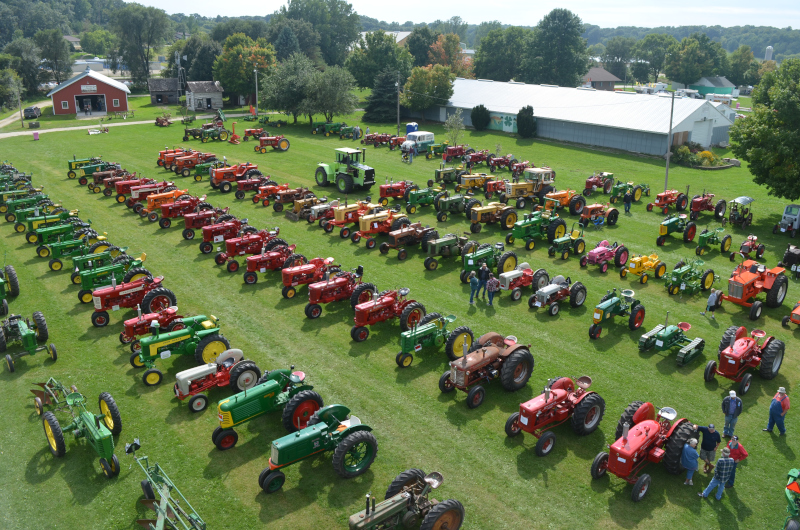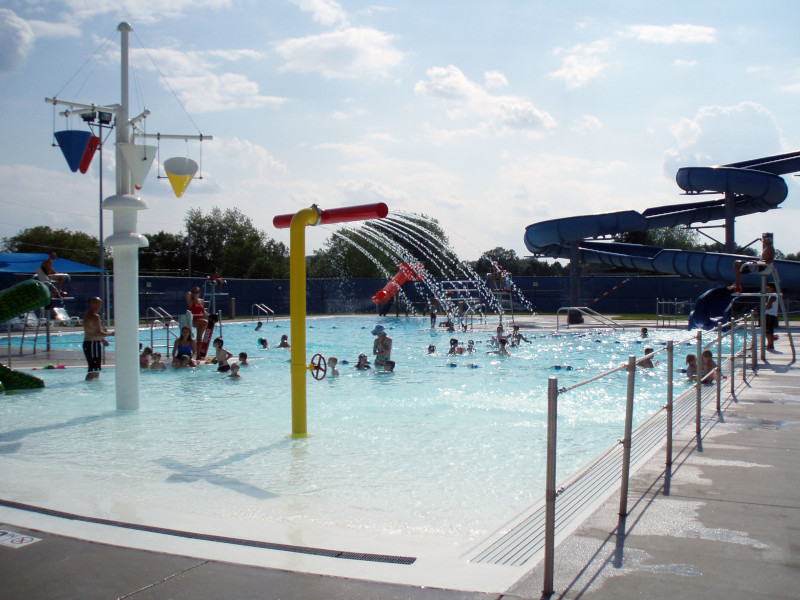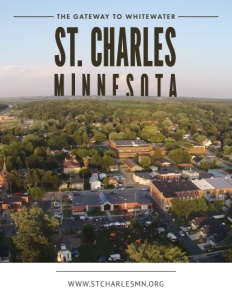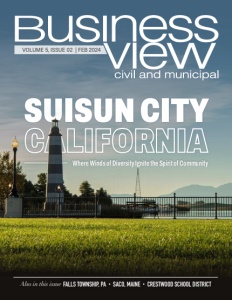St. Charles, Minnesota
The Gateway to Whitewater
A small town capitalizes on its location and its family-friendly amenities
About a year ago, Andrew Langholz picked up and moved his family to St. Charles, Minnesota, a small city of 4,000 in the southeastern corner of the North Star State, after accepting the position as its new City Administrator. Langholz is not the first new resident to have recognized the many attractions of this family-friendly community, known as the Gateway to Whitewater. People have been moving to St. Charles, named after St. Charles Borromeo of Italy, for many reasons over many years.
In its early days — it was founded in 1854 and became a city in 1858 – its location in the heart of some of the state’s richest farmland, spurred its growth as an agricultural center. Over time, others came to enjoy the beauty of the Whitewater River Valley, and the excellent trout fishing to be found in nearby Whitewater State Park, a 2,700-acre, natural preserve that opened in the 1920s. Most recently, its small-town ambiance has lured workers from its larger neighbors – Rochester, some 20 miles to the west, and Winona, about 20 miles due east – earning it recognition as a much sought-after bedroom community.
“Being a bedroom community, over time, can have a negative connotation,” admits Cris Gastner, the city’s Economic Development Director.
“St. Charles, with its proximity to two large economic centers, has taken that connotation and flipped it into a positive. We’re going to have people who want to live in a community that has that small-town feel, yet it’s an easy commute if they happen to work in Winona or Rochester. And I think we’ve done a phenomenal job creating that quality of life that people are looking for. It has parks and recreation, strong infrastructure, and a historic downtown; if we keep those things intact, people are going to want to locate here.”
Amenities abound
The city experienced its first housing boom in the late 1990s-early 2000s. To serve its residents, St. Charles has eight community parks that includes over 80 acres of parkland, nearly eight miles of walking trails, and created the Mel Brownell Family Aquatic Center, which opened in 1999.
“That put us on the map, swimming pool-wise, back then,” recounts Parks and Recreation Director, Rick Schaber. “It was one of the first aquatic centers in the area with water slides and a zero depth entry.”
Working with the local St. Charles Public School District, the city also offers all sorts of sports and recreational programs for both children and adults. “We have about 1,500-2,000 participants in our programs annually,” Schaber says. “We also have a beautiful, 18-hole golf course that opened in 1992 (the St. Charles Golf Course). It’s been an asset for our community. It’s privately owned, but we partner with it for multiple events. And, of course, Whitewater State Park, about six miles to the north of us, has been an asset forever. We have a lot of visitors that come from Whitewater.”
“Families are an important part of what makes St. Charles great” exclaimed Langholz. “The school district, which includes an elementary and high school, recently completed an $18,500,000 project to greatly enhance their facilities.” The city also has a childcare center that can accommodate more than 100 children.
A business-friendly city
St. Charles is also uniquely situated for business development. It sits between two major traffic routes: I-90 to the south and State Hwy. 14 on the north side of town. In addition, State Hwy 74 runs north/south through its downtown core, which contains many historic buildings and businesses.
“We have two traffic generators on each side of us and we’ve had a business corridor along Hwy. 14 for a long time, in addition to our downtown core,” Gastner notes. The story of how its newest economic engine, the Chattanooga Innovation Park, situated off I-90, came to be, speaks well of the city’s foresight and planning.
“Back in 2009, in our downtown, we had a fire at a major manufacturer (North Star Foods, a poultry processor), which was our largest employer and taxpayer at the time,” Gastner explains.
“It destroyed their plant. In a matter of a couple of days, they went from a company that had just filed for a $3 million expansion to a company that didn’t exist. The community was faced with the question of: ‘What’s next for us?’ The city administration explored opportunities with the company about a rebuild; we knew that downtown probably wasn’t the right spot to rebuild a major manufacturer, so we identified some sites on the four corners of the community as potential rebuild sites and worked with them to identify the best opportunity to rebuild. And that was near I-90.”
“The proximity of I-90 to our downtown was unique for us; in a lot of communities around I-90, you have to travel several miles to reach their downtown – for us it is only about a mile. You can see the lights of downtown St. Charles when you take the exit. That spurred our first direct connection to I-90.”
“Ultimately, because of the state of the economy in 2009, North Star Foods chose not to rebuild,” Gastner continues.
“When we got that news we wondered, ‘Do we want to create this business park even without North Star as an anchor; does it still make sense?’ The answer was ‘Yes.’ We knew it was the next big opportunity for the community and we thought it was the right time to make it happen. And because it would be kind of a doorstep to our community, we had to be deliberate about what we wanted it to look like. That’s why we created a new zoning designation – Regional Commercial – specifically for that site because we knew we wanted a good mix of commercial businesses and light industrial, and we wanted to be able to blend them to create what, visually, would be a welcoming corridor.”

The business park opens
The Chattanooga Innovation Park completed its Phase One development in 2011 with approximately 35 acres of developable land. It was designed with numerous redundancies in its water, sewer, electric, and telecommunications infrastructure to support future growth. It offers low tax and utility rates and direct access to interstate transportation.
Today, it is host to a Love’s Travel Stop, Whitewater Chrysler, Dodge, Jeep, and Ram automotive dealership, and several other businesses. “It has been a successful endeavor,” says Gastner. This success of the Chattanooga Innovation Park prompted the city to expand the area and develop the second phase in 2021. The expansion added nearly 20 new acres of developable land.
When St. Charles decided to create the park off of I-90, Gastner shares that city officials were concerned that it might create a perception of wanting to pull downtown businesses to the new site.
“We had to be deliberate about not doing that,” he states.
“So, in addition to the development of the business park, we also created a commercial rehabilitation program to help those existing building owners in our downtown core and along that Hwy. 14 corridor, with building improvements. We wanted to keep our downtown core very strong; we have some beautiful historic buildings that give it a very unique look and we wanted to keep people reinvesting in that area and keep that section of our business community thriving, as well.”
“We saw some other communities tear down some of their older buildings, which may be great for development, but in St. Charles, we’ve always wanted to maintain the classic look of our downtown core. Our goal was to help the building owners reinvest in their buildings and make improvements to them so that we could keep the original look of the downtown and yet make those buildings more efficient and more economical.. And I think we’ve been very successful in doing that.”
Originally, the city offered one-to-one matching grants of up to $10,000 for commercial rehabilitation projects. It has subsequently reduced those grants to $5,000, to increase the number of recipients.
“Ultimately, in rehab projects, five or ten thousand dollars isn’t a ton of money,” Gastner admits.
“Even if it’s a small piece of the puzzle, and it incentivizes the building owners to continue to make improvements to their buildings, it’s worth it. Over the years, we’ve seen more than a six-to-one investment based on the funds that we put in; the private side has come in over sixfold! We’ve seen over a million dollars of reinvestment into that core, which I think is amazing.”
Infrastructure projects
In a further bid to support downtown businesses, Langholz adds that the city is in preliminary discussions with the MN Department of Transportation to redo the streetscape along Hwy 74. “In the meantime, we have multiple committees that work on planters, benches, flowers, etc. to make the area a warm and welcoming place to visit.
“The city also owns three public parking lots in close proximity to the downtown area, so even if parking is full along the main corridor, we have plenty of overflow parking for people to get to their destination quickly.”
Other downtown enhancements were made about ten years ago with funding from the federal Safe Routes to School program, which allowed the city to upgrade pedestrian amenities between the library and the elementary school. In 2019, residents dedicated the St. Charles Veterans Memorial, right off Main St., which was paid for entirely with public donations.
The rest of the city had major street upgrades in 2021. “It touched every street in town,” Langholz reports. “It’s a large bond for the city, but it included adding sidewalk, mill and overlay, crack sealing, complete reconstruction – everything that you can think of in redoing the streets.”
Another infrastructure project, Phase One of the Whitewater River Restoration Project, was initiated as a result of a major flooding of the river in August 2007, when heavy rains and a stalled frontal boundary pelted the region with rainfall rates of one to two inches per hour.
“In 2021 we received a $500,000 grant from the Minnesota Department of Natural Resources for phase one,” says Langholz. “and we were recently notified that we were approved for another grant to complete phase two in 2025. We’re shooting for three phases to get through the entire community.”

Housing needs and remedies
Langholz believes that the city is headed for another boom in housing. “In the ‘90s and early 2000s, we had a tremendous amount of development,” he recounts.
“St. Charles was very blessed to have several local, very dedicated developers that did a tremendous amount for the city. They are nearing retirement age, so we’re looking for the next wave of developers that view our proximity to Rochester and Winona as a benefit for their next residential developments.”
“We do have a recent development on the southeast side of the city along Hwy. 14, and the city has recently approved another zoning district which allows for larger apartment units , as that has been identified as being one of the needs for the community. We also have several recent subdivisions in the northeast corner of the community that includes over one hundred newer homes, and these lots are filling up quickly.”
During the early 2000s, when St. Charles experienced its first housing boom, some residents moved from smaller homes in the downtown core to larger homes further out. That created an inventory of older, less expensive, starter homes for a new generation of residents, and that process is likely to recur as even newer housing gets built. Langholz says that the city has “lifecycle housing.”
“We have affordable homes, some very nice larger homes, a retirement home, and also an assisted living facility in town,” he notes. “Once people move here, they can put down roots and stay forever. That’s pretty unique in a small town.”
Moving ahead
Going forward, one of Langholz’s main priorities is to update the city’s subdivision and zoning ordinances as well as the comprehensive plan, so that it can make it as easy as possible for new developers who want to build in St. Charles.
“They will know what our focus is and how we can assist them,” he states. “That’s the primary goal for ’24 and ’25.”
Gastner says that his focus will be marketing the additional acres available via Phase Two at Chattanooga Innovation Park, as well as new lots that have opened up at Whitewater Industrial Park on the other side of town. “I think there’s an opportunity for continued industrial growth in the community. We’ll also keep our eye on our downtown corridor and commercial corridor along Hwy. 14, working with those folks on what they need to make improvements to their buildings to keep our collective commercial and industrial base as strong as it has been and continues to be.”
“We don’t want to move all of our business out to the highway corridor. It’s never been a goal. Our downtown is the heart and soul of our community. Keeping it vibrant is extremely important. St. Charles is a very resilient community. It takes everything that can be thrown at it – fires and floods. And it bounces back even better than it was before.”
AT A GLANCE
St. Charles, Minnesota
WHAT: A bedroom community of 4,000
WHERE: In Winona County, in the southeastern corner of the state
WEBSITE: www.stcharlesmn.org


